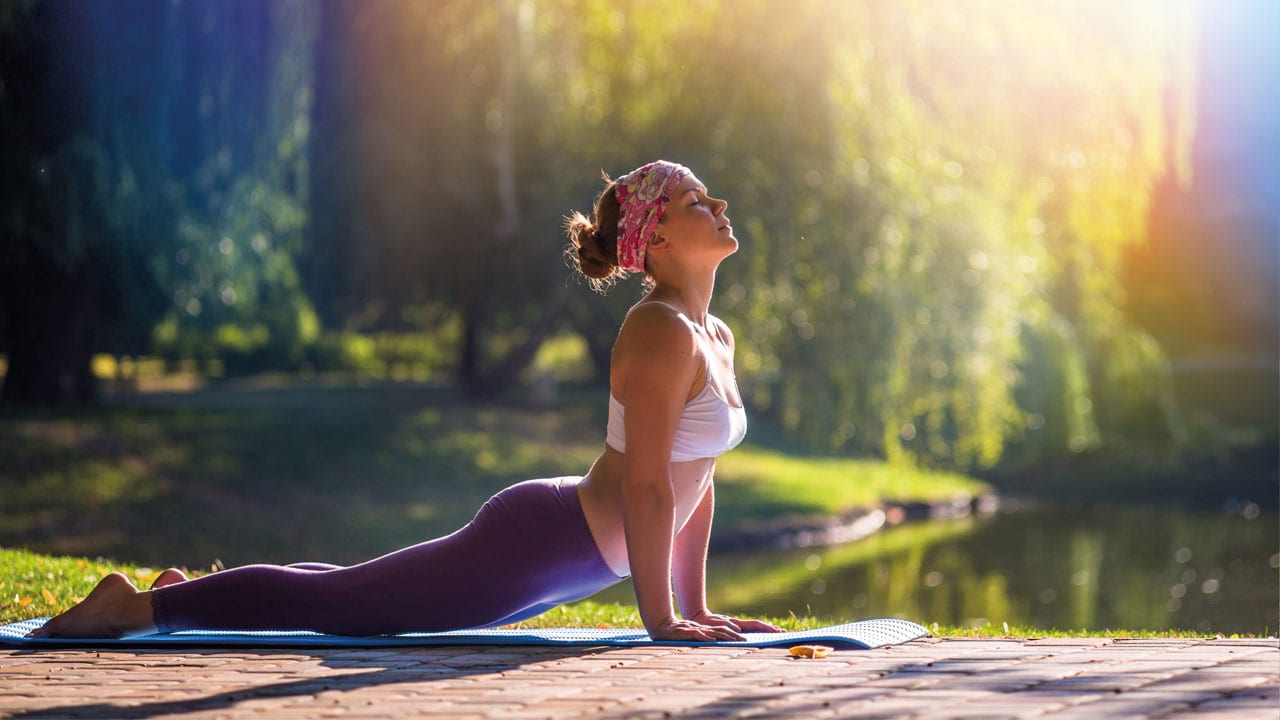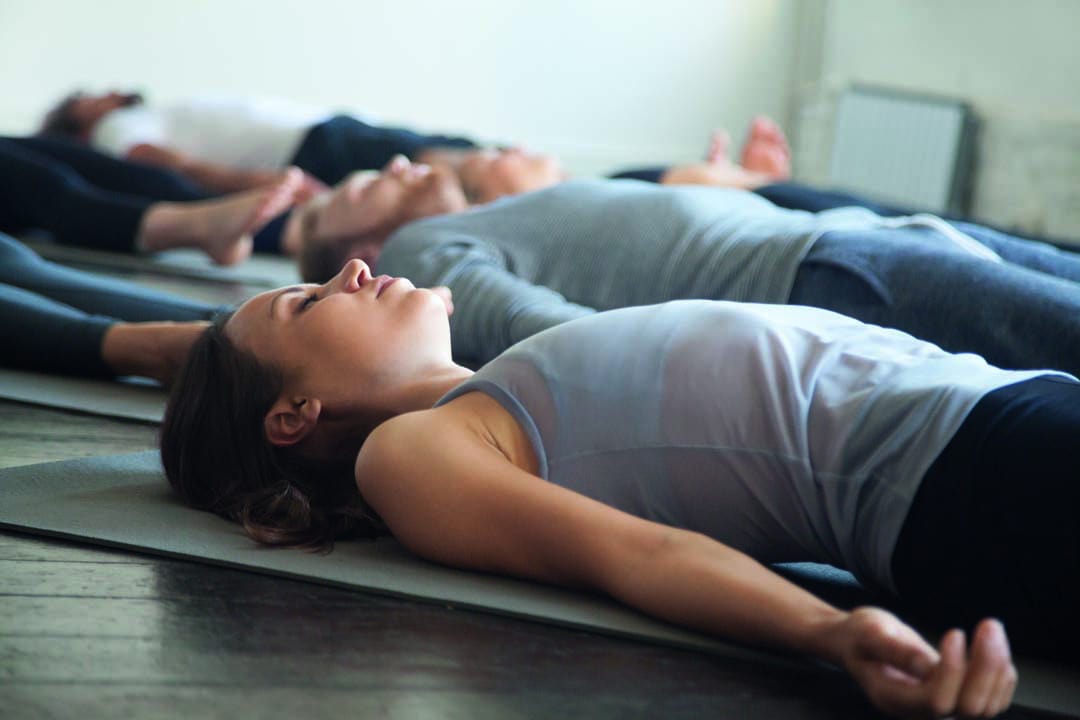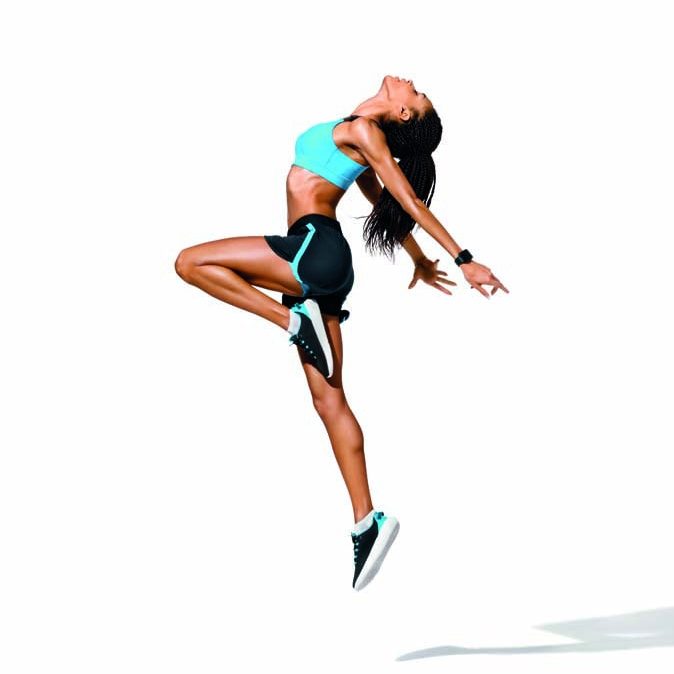
Why there is more to anxiety relief than Restorative Yoga
Debunking the myth that only calming yoga can provide anxiety relief and how more dynamic practices can also help. By Vanessa Michielon
As a society, we are starting to understand that specific choices within our movement routine can have a huge impact on our emotional health and wellbeing. According to the Mental Health Foundation, exercise has been cited as one of the most effective ways to cope with stress during the pandemic.
When dealing with anxiety, we are often drawn to think that the only way to ease the agitated parts of our mind is to practice static, gentle relaxation techniques. While increasing numbers of studies suggest that slow forms of yoga and conscious breathing represent an effective adjunct therapy for people experiencing anxiety disorders, these are not the only way we can use our mindful movement practice to shift into a safer mental or emotional state.
For some of us, a balanced and varied training programme — which not only includes calming, but also stimulating activities — can be a more effective strategy to reduce the symptoms of anxiety and improve our resilience to stress.
For instance, practicing Power Yoga, sweating it all out in a dance class, going for a run, or lifting weights — especially when performed alternating with soothing activities and in a mindful way — can all help us get back in touch with our bodies, give our mind some space from rumination and positively reshape our relationship with our life challenges.
Research shows that anxiety corresponds to a predominance of heightened sympathetic states of our autonomic nervous system, so to rebalance we want to embrace practices, which help us both: (a) down-regulate to the parasympathetic state (changing our internal state), and (b) develop mindfulness (learning how to be more tolerant to discomfort).
(a) Slow breathing, gentle stretching, grounding, all generally help us to down-regulate. One of the ways mindful movement, like specific forms of yoga and Pilates, shifts us to a calmer state, is through the increase of GABA neurotransmitters in the brain, which weaken our fear response.
(b) Mindful movement strengthens the prefrontal cortex of the brain and helps create a buffer between our stressors (what challenges us) and our response. Tuning in to our body and improving proprioception increases our capacity to decode threat or safety messages, so that we can learn how to react less impulsively.
But there is more… For the anxious mind, it can be extremely challenging to be still and focus inwards, as rumination might arise and create even more anxiety. In this case, a more vigorous practice can be beneficial to start with, especially for those of us who experience anxiety as restlessness.

Dynamic movements like rhythmical sun salutations can help us consume specific hormones and get rid of excess energy, so that we can receive some relief from hyper-arousal and settle into stillness more easily.
When performed within a safe range, physically challenging activities that lift our heart rate help us associate a state of high activation with excitement and joy (the safe state of the sympathetic nervous system), rather than fear and anxiety only (the sympathetic nervous system under threat).
According to the Polyvagal theory by Dr Steven Porges, mirroring someone else or moving in a synchronous way within a group, like in a dance class, stimulates the vagus nerve, allowing us to reduce anxiety and feel grounded, joyful and safe.
Muscular contractions in physically challenging activities produce myokines, the hope molecules, which contribute to keep our brain healthy, reducing the symptoms of anxiety and depression. Strength training, Pilates or running can literally shape our sense of self, increasing our confidence and positively changing the perception of what we are capable of.
When approached within our safe window of capacity, our movement practice can help us respond to stress more effectively, training our nervous system to swing harmoniously and healthily between activated and relaxed states.
A recommended course of action when building our training routine, one aimed at improving our relationship with anxiety, would be to learn some basic tools that can help us down-regulate our nervous system first (for instance, elongating our out breath or grounding techniques) so that we can use them as an anchor in case we feel overwhelmed when performing more active movements. Then, we can experiment with a range of more or less physically intense practices — from core work to cardio, Dynamic to Restorative Yoga — and closely notice how our body and mind react, what makes us feel safe and at ease, or what feels too triggering to be dealt with right now.
Most importantly, we want to honour our uniqueness: because of our history or predispositions, practices that in theory ‘should’ make us feel more relaxed, could actually be triggering or not useful in a specific circumstance. For instance, changing our breath or opening our body with deep stretches too soon can actually be pretty scary if we have spent years unconsciously protecting and defending ourselves through tightening or collapse in specific areas of the body. The more we practice, the more we learn how to use every tool in a compassionate and wise way — we know when we need to go for a run to discharge stress, for example, or when we are ready to settle in stillness and simply watch our thoughts.
Based on these considerations, the Transformative Movement Method online programme was created to offer not only tools to reduce our perceived stress, but also to build self-confidence and a sense of agency, and lift our energy up when we feel stuck or lethargic. By providing a varied and balanced range of practices organised in weekly routines, the method addresses all components of fitness (including power, flexibility, balance, muscular endurance and coordination) in a cohesive way. The goal is to ultimately empower people to use their movement practice to understand which tools work best for them to mobilise energy, feel strong and open, and also to rest and recover more efficiently.

Trained in Yoga Therapy for Anxiety and Advanced Yoga Psychology, Vanessa Michielon is the founder of the Transformative Movement method, empowering people to embrace yoga, Pilates and dance to improve physical health and achieve a balanced state of mind.
Find her on Instagram @vanessamichielon and enjoy her free course Daily Movement Rituals at: vanessamichielon.com/courses/dailymovementrituals




